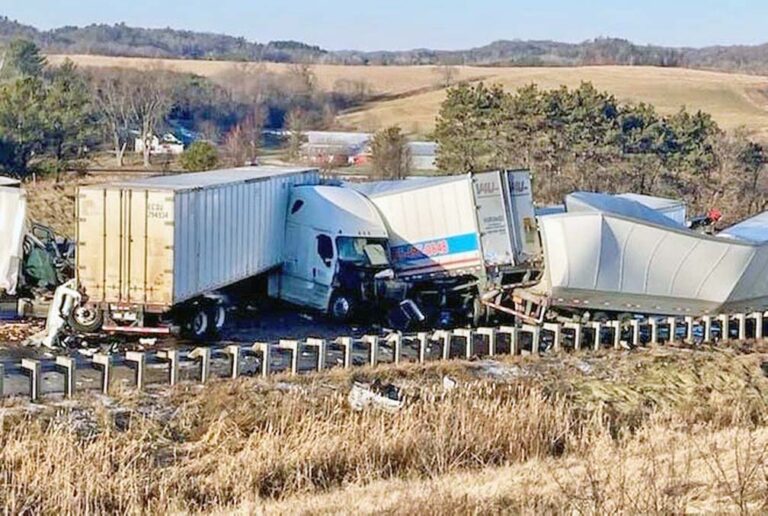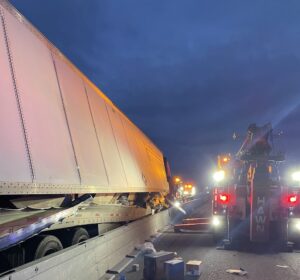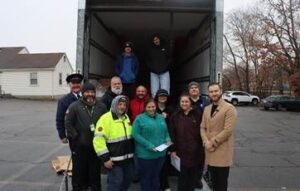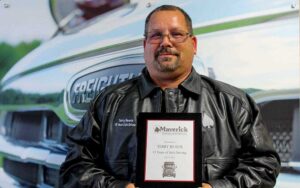WASHINGTON — During his tenure as U.S. transportation secretary, Pete Buttigieg has made it clear that he’s laser-focused on improving highway safety.
In October, he met with families of truck crash victims to discuss ways to make big rigs and the trucking industry safer.
Among the initiatives discussed were the National Highway Traffic Safety Administration’s (NHTSA) proposal to require automatic emergency braking (AEB) technologies, including pedestrian AEB on passenger vehicles and AEB on heavy trucks, as well as the Federal Motor Carrier Safety Administration’s proposal to require speed limiters on big rigs.
On Nov. 20, Buttigieg participated in the World Day of Remembrance for Road Traffic Victims (WDR), saying that “we mourn those who have lost their lives in traffic crashes.”
The event happens on the third Sunday of November each year.
However, “mourning is not enough,” Buttigieg noted. “We must all dedicate ourselves to ending this crisis on our roadways and creating a safer transportation system so that more families do not have to share this grief.”
The statistics on fatal crashes involving big rigs are grim.
NHTSA reports that fatalities involving large trucks surged to 5,600 deaths in 2021, up from 2020’s total of 4,965.
In a Sept. 19 report, members of Congress and the Truck Safety Coalition (TSC) called for immediate action to advance truck safety reforms following the release of the “Deadliest Truck Crash States” report.
“The roadway safety crisis does not receive the attention it deserves,” said Rep. Elanor Holmes-Norton, D-D.C., who chairs the House Highways and Transit Subcommittee on Transportation and Infrastructure. “One of the fundamental roles of government is to protect people. With that in mind, I have made safety one of my top priorities as chair of the Subcommittee on Highways and Transit. I will continue to work toward safer roadways for all users, including in my run for chair of the Committee on Transportation and Infrastructure in the 118th Congress. Thank you to the Truck Safety Coalition for preparing this landmark report on truck crashes.”
USDOT officials are touting multiple efforts they have adopted to help cull the number of traffic fatalities.
According to the USDOT news release:
- USDOT has issued a National Roadway Safety Strategy (NRSS).
- USDOT has published an on-line dashboard to track progress against NRSS commitments.
- USDOT has launched the Safe Streets and Roads for All grant program, which will provide $5 billion over five years to communities to plan and implement road safety actions and is funded by the President’s Bipartisan Infrastructure Law. The first round of awards for this program are expected to be announced in early 2023.
- USDOT is incorporating safety for all users in our guidance, grant awards and review processes.
- USDOT has committed to making Complete Streets our default approach as we work with State and local agencies.
- USDOT’s Federal Highway Administration’s (FHWA) Tribal Transportation Safety Fund awarded $8.9 million in grants to 51 Tribes for 58 projects to improve transportation safety and announced an additional $120 million in funding through FY26 made possible by President Biden’s Bipartisan Infrastructure Law.
- USDOT’s Federal Highway Administration worked with State and local governments to obligate $3.4 billion in Highway Safety Improvement Program funding to support the progress of more than 5300 projects.
- FHWA has issued an updated collection of proven safety countermeasures and strategies – including nine new additions – to reduce highway fatalities and serious injuries on our nation’s roadways. These countermeasures are widely accessible, but underutilized roadway safety elements such as speed limit signage that can be adjusted based on weather or road condition, wider edge lines for increased visibility, and the implementation of roundabouts and bike lanes.
- FHWA has issued the Vulnerable Road User Safety Assessment Guidance to States, providing them tools to conduct a comprehensive assessment of pedestrian and bicyclist fatalities in order to inform strategies and projects States can implement to make roadways safer for vulnerable road users.
- FHWA continues to work on updating the Manual of Uniform Traffic Control Devices and expects to have completed work in the first half of 2023.
- USDOT’s NHTSA has issued a final rulemaking on rear impact guards and is in the final steps of assembling the advisory committee on underride protection.
- NHTSA has made public and continued to collect more data about crashes that occur when advance technologies, specifically Automated Driving Systems (ADS) and Advanced Driver Assistance Systems (ADAS) are engaged, through its Standing General Order.
- NHTSA has overseen the first two ADS recalls in history.
- NHTSA has resolved enforcement actions against three regulated entities for violations of the Vehicle Safety Act, with civil penalties of more than $6 million.
“We know roadway deaths are preventable because some places are doing a much better job at preventing them — both abroad and within certain U.S. communities,” Buttigieg said. “The U.S. Department of Transportation is committed to making real progress towards ending traffic fatalities, and we call on everyone to join us in this national effort that can only succeed when we work together.”
Sen. Richard Blumenthal, D-Conn., said the TSC report highlights the need for urgent action by Congress to stem the rising tide of truck crashes and fatalities.
“NHTSA’s data makes it clear that without stronger precautions and safety measures, commercial motor vehicle incidents … will continue to plague our roads,” he said. “I’m proud to stand with advocates and families of victims to demand comprehensive, lifesaving solutions.”
Born in Pine Bluff, Arkansas, and raised in East Texas, John Worthen returned to his home state to attend college in 1998 and decided to make his life in The Natural State. Worthen is a 20-year veteran of the journalism industry and has covered just about every topic there is. He has a passion for writing and telling stories. He has worked as a beat reporter and bureau chief for a statewide newspaper and as managing editor of a regional newspaper in Arkansas. Additionally, Worthen has been a prolific freelance journalist for two decades, and has been published in several travel magazines and on travel websites.
















Hello. this is a quick comment. Meaning not over thought. Anyway, I drive a 2020 Freightliner Cascadia, equipped with AEB. This, in my opinion, will cause more problems then it solves. It will sometimes set off audible and visual warnings, and stab the brakes hard. For a sign on a curve. Scared the heck out me the first time it happened and several times after that. It hasn’t happened on icey roads yet but that is a big fear!!! In multi lane city traffic it may go off at anytime. Disturbing. It seems to be watching all the movement in front of me. No A.I. is going to figure that out easy.
Also, I have question about fatalities involving large trucks. Is it know if the data is broken down by age and experience? That info may be more helpful then throwing developmental technology at the problem.
This may be age bias but I think they already put people too young into big trucks.
Yes, a little age bias,
Yes, a little age bias, and also experience amounts to nothing if taught improperly. I absolutely despise it when drivers ask me how long I have been driving, because it only matters if a person is being unsafe. I see way more complacent and dangerous driving from the “experience driver,” than I do new drivers because they think they have been driving all these years and they know the roads like the back of their hand. How naive can a person be. Knowing the road does not mean you know what is around the curve, bottom of the hill, or what the other drivers are going to do. I was in corrections for a very long time and it sees that complacency doesn’t only kill in the prisons. These drivers get so comfortable and don’t believe anything is going to happen, and that would be true if they were the only one on that road ever and weather was not a factor. Face it, the old days are gone and the new technology is coming in whether we like it or not. By the way, the only way your truck will brake is if you have the cruise on, and if you have your cruise on in winter weather your just asking to kill yourself and those around you when you truck starts to slide, because the cruise will continue on, despite you sliding. Keep your cruise off in the winter weather and you don’t have to worry about the auto braking. My try chirps at me for signs, overpasses, and trash that blows in front of the radar. If the cruise is on it will brake quickly, but I have learned when to either press the accelerator or cancel the cruise at the right time and it will not brake, takes a little practice. By the way, it doesn’t matter the training, age, or experience in this job if drivers are not willing to actually follow the traffic laws and the laws of physics then all that experience is for not. Seems as though money is the reason idiot drivers driver the way they do instead of trying to save lives by doing the right thing, “driving like an actual Professional!”